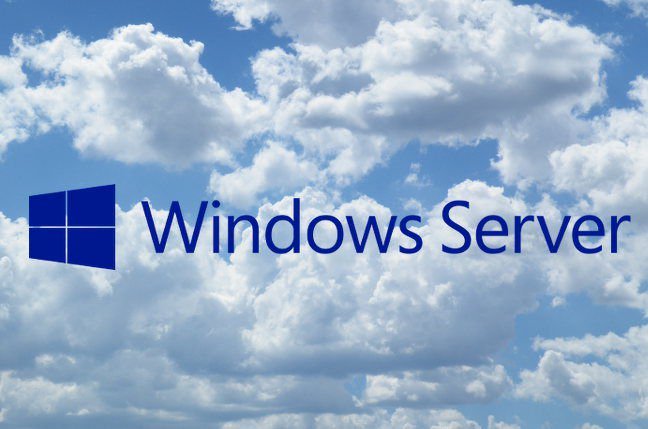
The Windows Server 2008 End of Life is a Perfect Opportunity to Move to the Cloud
It had to happen eventually: Microsoft is ending its extended support for Windows Server 2008 in January 2020. That means no more updates unless you want to pay for them.
The end of extended support doesn’t have to be a headache. It could be your company’s chance to upgrade its tech – and not just to another on-premise server. If you’re looking into solutions and alternatives for your Windows Server 2008 end of life transition, consider opting for a full digital transformation. Your organization can transition to a cloud platform such as Amazon Web Services (AWS) or Microsoft Azure, rather than just doing an in-place upgrade.
Here are some reasons why the Windows Server 2008 end of life could be the perfect opportunity for your company’s growth.
Why Should You Switch to a Cloud Solution Now?
Affordable, efficient, and scalable, cloud solutions have become the de-facto standard for many industries and organizations. Cloud solutions are less cumbersome than on-premise products, with the ability to easily requisition additional resources. Moving to cloud solutions means you’ll never need to worry about upgrading your server hardware again, and you’ll see easy-to-manage, incremental upgrades rather than the more dramatic, disruptive upgrades that on-premise solutions often demand.
If you transition to another on-premise server, you’re eventually going to need to upgrade again, and yet again: You’ll be reliant on your hardware for your server-side solutions. If you’re going to make a transition of your data regardless, now is the perfect time to take the leap towards the cloud.
Why Are Cloud Servers Better Than On-Premise Solutions?
Of course, every business is different, and some businesses today choose to maintain hybrid infrastructures rather than solely cloud-based ones. However, there’s a reason why many organizations have switched entirely to the cloud. Cloud solutions have a few significant advantages when compared to on-premise infrastructure:
- You don’t need to continue maintaining hardware. With an on-premise solution, every time your hardware is ready for an upgrade, you need to spend time researching new solutions and investing in them before risking disruption and headaches deploying the new hardware or software. With a cloud-based solution, all your equipment upgrades are handled by someone else.
- You can create a completely decentralized, collaborative workspace. Today’s business environment often includes a significant amount of remote and international work, which is facilitated through a cloud-based solution. Cloud solutions are accessible from anywhere in the world.
- You are able to scale your solutions very quickly. Cloud-based solutions provide resources on a tiered basis, with the ability to upgrade as needed and requisition resources on-the-fly when needed. Otherwise, you would need to upgrade your solutions every time you experienced an increase in need – and then be left with unused capacity if the demand fell.
- You can support the needs of external stakeholders and clients. On-premise servers are often only accessible privately, for reasons of security. Cloud-based solutions can be accessed by external stakeholders and clients without compromising security.
- You are able to improve upon your security. With a cloud-based solution, you’re able to put your security in the hands of a managed service, rather than having to manage all your own security technology, processes, and needs. A managed service can negotiate your security emergencies from anywhere in the world.
- You can reduce your overall costs. On-premise solutions are more expensive in terms of upgrades and maintenance, whereas cloud-based solutions usually require you to only pay for the resources you need. You are also able to scale the solution upward and downward quickly, as previously mentioned, so you only ever pay for what you need, rather than risking paying more for capacity you aren’t using.
These aren’t all the advantages of cloud services, but they are some of the most important ones – and the ones you should consider when deciding whether you want to improve your existing architecture or upgrade to cloud services.
What Challenges Could You Encounter When Transitioning to the Cloud?
Cloud solutions aren’t flawless; there are some issues you could encounter during a transition. The cloud does require that you rely upon another business for your infrastructure, and you may be concerned about what could happen if your cloud-based solution goes out of business. There can also be issues with security when it comes to cloud-based solutions, due to their high level of accessibility.
Despite this, while there can be some complications to a cloud migration, cloud services remain extremely useful. For small and mid-sized businesses, the cloud allows you to leverage virtually unlimited resources for superior performance. For larger enterprises, the cloud has become a competitive necessity.
How Can You Migrate to the Cloud?
Migrating to the cloud is a multi-stage process. When taken step-by-step, it becomes much easier – but it often requires the experience of a managed partner to pull off without any complications. Ultimately, a migration to the cloud is going to save your business money while improving accessibility and productivity, and it will also enhance your company’s ability to remain agile in the future. However, it should be managed correctly to avoid disruptions.
Most businesses are ultimately going to switch to cloud-based services, so the Windows 2008 end of life is an excellent opportunity to explore this new technology and to determine whether it might be right for your business. Want help in your business’ journey to the cloud?Contact Red River today to help you get started on your digital transformation.

written by
Corrin Jones
Corrin Jones is the Director of Digital Demand Generation. With over ten years of experience, she specializes in creating content and executing campaigns to drive growth and revenue. Connect with Corrin on LinkedIn.




